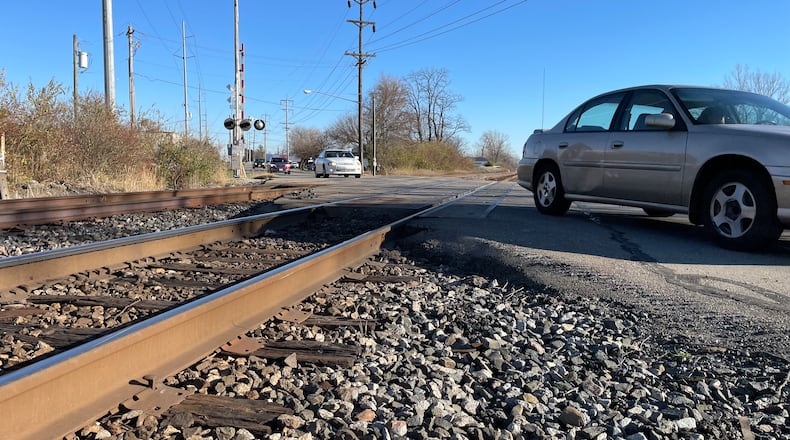The applications will be sent through the Butler County Transportation Improvement District (TID) for the U.S. Department of Transporation’s Consolidated Rail Infrastructure and Safety Improvements (CRISI) program, just as the city did over the summer for another U.S. DOT funding program, the Railroad Crossing Elimination (RCE) grant.
“Because these are competitive grants with different funding, we are submitting to both programs in order to increase our chances of being funded,” said Fairfield Public Works Director Ben Mann. “The Symmes Road project is eligible for both programs and could be funded out of either source of money if it scores well enough relative to the competition.”
Letters of support were written by CSX officials, Butler County’s state lawmakers, Congressman Warren Davidson, Sens. Rob Portman and Sherrod Brown, and leaders of the major businesses on both sides of the railroad crossing. Additionally, a joint letter of support was signed by the mayors of Hamilton and Fairfield.
The Symmes Road Grade Separation Project would be similar to the South Hamilton Crossing project the city of Hamilton did in 2018 at Grand Boulevard. There are several issues at this crossing, the first being the number of trains that use these tracks.
Between 35 and 40 trains a day historically pass through, and there is a growing number of stopped trains that block the thousands of vehicles that use Symmes Road. An average daily count of more than 14,400 vehicles cross the tracks, according to the city. Additionally, congestion on North Gilmore Road, which is an access to the Butler County Regional Airport from the south, would be reduced. There are about 9,000 vehicles that pass those tracks every day.
Trains frequently block one or both crossings for several hours at a time, Mann said.
Additional justifications for the project funding, according to Fairfield and the TID’s RCE grant application, including safety and economic development.
The city sites that the Symmes Road and North Gilmore Road crossings have seen a combined 16 crashes, eight fatalities, and nine injuries, according to the FRA Grade Crossing Inventory.
Grade separation and closure of these crossings, respectively, will eliminate two conflict points while improving emergency response times both within the city and regionally, according to the city.
Additionally, there are more than 36,000 jobs within the 3 miles of the Symmes Road crossing as this corridor provides critical access to the region’s workforce. Several industrial properties surrounding the Symmes Road crossing present new job attraction and retention opportunities, with some served directly by rail access, according to the city.
The funding being requested would help conduct an engineering study that would design the overpass. Engineering is anticipated to cost $3.75 million as the project itself could be between $25 million and $30 million. The South Hamilton Crossing project cost $32 million.
Mann said the city anticipates contracting HDR, Inc. as a consultant with expertise in this area to prepare a grant application for the CRISI program, as they did with the RCE grant request.
“It’s anticipated that if the project was awarded for engineering, the city would work with the Butler County TID to submit a construction grant application no sooner than the following year,” Mann said.
City Manager Scott Timmer said the U.S. Federal Railroad Administration suggested Fairfield apply for both funding opportunities.
The CRISI funds were made available in September and totaled just more than $1.4 billion. U.S. Transportation Secretary Pete Buttigieg said the additional CRISI funding was made possible through the Bipartisan Infrastructure Law.
“Freight rail is a critical part of our supply chains, and when shipping costs come down, families pay less for goods,” Buttigieg said, adding this new issuance of federal funds is “the biggest round of funding ever to make both passenger and freight trains across America safer, faster, and more reliable.”
About the Author

